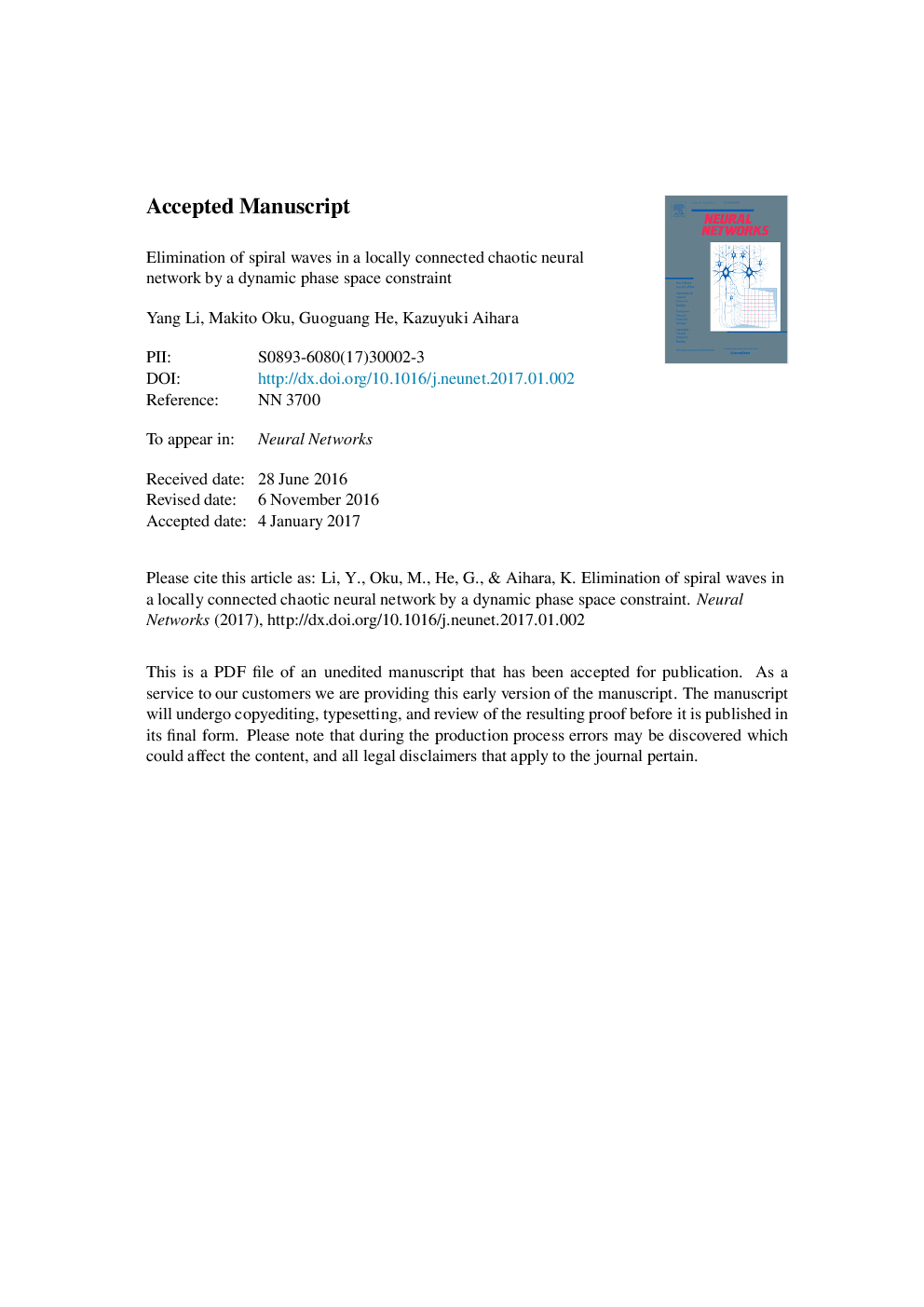| Article ID | Journal | Published Year | Pages | File Type |
|---|---|---|---|---|
| 4946714 | Neural Networks | 2017 | 33 Pages |
Abstract
In this study, a method is proposed that eliminates spiral waves in a locally connected chaotic neural network (CNN) under some simplified conditions, using a dynamic phase space constraint (DPSC) as a control method. In this method, a control signal is constructed from the feedback internal states of the neurons to detect phase singularities based on their amplitude reduction, before modulating a threshold value to truncate the refractory internal states of the neurons and terminate the spirals. Simulations showed that with appropriate parameter settings, the network was directed from a spiral wave state into either a plane wave (PW) state or a synchronized oscillation (SO) state, where the control vanished automatically and left the original CNN model unaltered. Each type of state had a characteristic oscillation frequency, where spiral wave states had the highest, and the intra-control dynamics was dominated by low-frequency components, thereby indicating slow adjustments to the state variables. In addition, the PW-inducing and SO-inducing control processes were distinct, where the former generally had longer durations but smaller average proportions of affected neurons in the network. Furthermore, variations in the control parameter allowed partial selectivity of the control results, which were accompanied by modulation of the control processes. The results of this study broaden the applicability of DPSC to chaos control and they may also facilitate the utilization of locally connected CNNs in memory retrieval and the exploration of traveling wave dynamics in biological neural networks.
Related Topics
Physical Sciences and Engineering
Computer Science
Artificial Intelligence
Authors
Yang Li, Makito Oku, Guoguang He, Kazuyuki Aihara,
